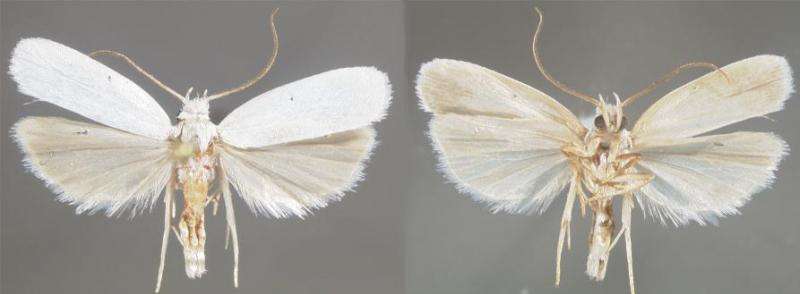Immaculate white: New moth species preferring dry habitats is a rare case for Florida

Spreading its wings over the sandhills and scrub of peninsular Florida, a moth species with immaculately white wings has remained unnoticed by science until Mr. Terhune Dickel brought it to the attention of Dr. James Hayden of the Florida Department of Agriculture and Consumer Services. As a result of their research, published in the open-access journal ZooKeys, the authors have also included a key to facilitate the recognition of different pale-winged moths and their close relatives.
With its taste for much drier habitats such as the sandhills of peninsular Florida, the new species, called Antaeotricha floridella, is a noteworthy case among the moths and butterflies. This kind of endemism is, however, quite common among other groups of insects and spineless animals.
Initially confused with another very similar and widely distributed species, called Antaeotricha albulella, the herein described moth was found to be actually quite different when dissected by co-author Terhune Dickel.
After Mr. Dickel showed specimens to Dr. Hayden, they noticed that its forewings are immaculately white, unlike those of its close relatives within the pale-coloured endemics for the New World. Their wings tend to differ in colouration on a species level and are often spotted, however minute these contrasting patterns might be. While the new species has its forewings always in snow-white on the upper side and its hindwings - in pale gray, its kin, A. albulella, has either one or two black spots of black on its own forewings and white or pale-gray hindwings.
Currently, not much is known about the new moth species' feeding habits. The evergreen sand live oak is the only plant that it has so far been confirmed to feed on. However, the researchers do not exclude the possibility that the new species could use a wider variety of oaks as hosts.
The occurrence of the moth exclusively in the dry areas of peninsular Florida fits an ecological pattern, and it is likely that more species, currently assigned under incorrect names, will be found in the state's sandhills and scrub.

More information: James Hayden et al. A new Antaeotricha species from Florida sandhills and scrub (Lepidoptera, Depressariidae, Stenomatinae), ZooKeys (2015). DOI: 10.3897/zookeys.533.6004
Journal information: ZooKeys
Provided by Pensoft Publishers




















